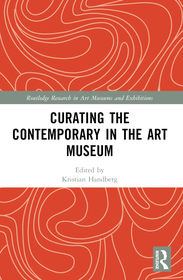
Rivals and Conspirators: The Paris Salons and the Modern Art Centre
The Paris Salons and the Modern Art Centre
- Kiadói listaár GBP 54.99
-
26 271 Ft (25 020 Ft + 5% áfa)
Az ár azért becsült, mert a rendelés pillanatában nem lehet pontosan tudni, hogy a beérkezéskor milyen lesz a forint árfolyama az adott termék eredeti devizájához képest. Ha a forint romlana, kissé többet, ha javulna, kissé kevesebbet kell majd fizetnie.
26 271 Ft

Beszerezhetőség
Bizonytalan a beszerezhetőség. Érdemes még egyszer keresni szerzővel és címmel. Ha nem talál másik, kapható kiadást, forduljon ügyfélszolgálatunkhoz!
Why don't you give exact delivery time?
A beszerzés időigényét az eddigi tapasztalatokra alapozva adjuk meg. Azért becsült, mert a terméket külföldről hozzuk be, így a kiadó kiszolgálásának pillanatnyi gyorsaságától is függ. A megadottnál gyorsabb és lassabb szállítás is elképzelhető, de mindent megteszünk, hogy Ön a lehető leghamarabb jusson hozzá a termékhez.
A termék adatai:
- Kiadás sorszáma 1
- Kiadó Cambridge Scholars Publishing (RJ)
- Megjelenés dátuma 2013. november 1.
- ISBN 9781443853767
- Kötéstípus Puhakötés
- Terjedelem457 oldal
- Méret 285x203x31 mm
- Súly 1180 g
- Nyelv angol 0
Kategóriák
Hosszú leírás:
Once the State-run Salon in Paris closed, an array of independent Salons mushroomed starting with the French Artists Salon and Women?s Salon in 1881 followed by the Independent Artists? Salon, National Salon of Fine Arts and Autumn Salon. Offering an unparalleled choice of art identities and alliances, together with undreamed-of opportunities for sales, commissions, prizes and art criticism, these great Salons guaranteed the centripetal and centrifugal power of Paris as the ?modern art centre?. Lured by the prospect of being exhibited annually in Salons the size of Biennales today, a huge number and national diversity of artists, from the Australian Rupert Bunny to the Spaniards Pablo Picasso and Juan Gris, flocked to Paris.
Yet by no means were these Salons equal in power, nor did they work consensually to forge this ?modern art centre?. Formed on the basis of their different cultural politics, constantly they rivalled one another for State acquisitions and commissions, exhibition places and spaces, awards, and every other means of enhancing their legitimacy. By no means were the avant-garde salons those that most succeeded. Instead, as this culturo-political history demonstrates, the French Artists? and National Fine Art Salons were the most successful, with the genderist French Artists' Salon being the most powerful and ?official?. Despite the renown today of Neo-Impressionism, Art Nouveau, Fauvism, Cubism and Orphism, the most powerful artists in this ?modern art centre? were not Sonia Delaunay, Émile Gallé, Paul Signac, Henri Matisse or even Picasso but such Academicians as Léon Bonnat, William Bouguereau, Fernand Cormon, Edouard Detaille, Gabriel Ferrier, Jean-Paul Laurens, Luc-Oliver Merson and Aimé Morot, who exhibited at the ?official? Salon supported by the machinery of the State.
In its exposure of the rivalry, conflict and struggle between the Salons and their artists, this is an unprecedented history of dissension. It also exposes how, just below the welcoming internationalist veneer of this ?modern art centre?, intense persecutionist paranoia lay festering. Whenever France?s ?civilizing mission? seemed culturally, commercially or colonially threatened, it erupted in waves of nationalist xenophobia turning artistic rivalry into bitter enmity. In exposing how rivals became transmuted into conspirators, ultimately this book reveals a paradox resonant in histories that celebrate the international triumph of French modern art: that this magnetic ?centre?, which began by welcoming international modernists, ended by attacking them for undermining its cultural supremacy, contaminating its ?civilizing mission? and politically persecuting the very modernist culture for which it has received historical renown.
Több








